Walter Elias Disney was a highly influential American animator, film producer, voice actor, and entrepreneur who revolutionized the animation industry. He achieved unprecedented success, holding the record for most Academy Awards won and nominations received by an individual. Disney's pioneering spirit led to numerous innovations in cartoon production. His films have been recognized for their cultural and artistic significance, with several inducted into the National Film Registry and honored as some of the greatest films ever made.
December 5, 1901: Birth of Walter Elias Disney
On December 5, 1901, Walter Elias Disney was born. He became a prominent American animator, film producer, voice actor, and entrepreneur who pioneered developments in the animation industry.
December 1903: Birth of Ruth Disney
In December 1903, Walt Disney's parents, Elias and Flora Disney, had their fifth child, Ruth.
1906: Family moved to Marceline, Missouri
In 1906, when Walt Disney was four years old, his family moved to a farm in Marceline, Missouri.
1909: Started school at the Park School
In late 1909, Walt Disney and his younger sister Ruth started school at the same time at the Park School in Marceline.
1911: Family moved to Kansas City, Missouri
In 1911, the Disney family moved to Kansas City, Missouri, where Walt Disney attended the Benton Grammar School.
1917: Enrolled at McKinley High School
In 1917, Walt Disney enrolled at McKinley High School in Chicago and became the cartoonist for the school newspaper.
September 1918: Joined the Red Cross
In September 1918, Walt Disney joined the Red Cross as an ambulance driver after forging his birth certificate.
October 1919: Returned to Kansas City and worked at Pesmen-Rubin
In October 1919, Walt Disney returned to Kansas City and worked as an apprentice artist at the Pesmen-Rubin Commercial Art Studio.
January 1920: Started Iwerks-Disney Commercial Artists
In January 1920, Walt Disney and Ub Iwerks started their own business, the short-lived Iwerks-Disney Commercial Artists, after being laid off from Pesmen-Rubin.
May 1921: Establishment of Laugh-O-Gram Studio
In May 1921, the success of the "Laugh-O-Grams" led to the establishment of Laugh-O-Gram Studio.
July 1923: Moved to Hollywood
In July 1923, Walt Disney moved to Hollywood at 21 years old, hoping to become a live-action film director.
1923: Laugh-O-Gram Studio went into bankruptcy
In 1923, Laugh-O-Gram Studio, established by Walt Disney, went into bankruptcy.
July 1924: Hired Ub Iwerks
In July 1924, Walt Disney hired Ub Iwerks, persuading him to relocate to Hollywood from Kansas City.
1925: Marriage to Lillian Bounds
In 1925, Disney hired Lillian Bounds as an ink artist and married her in July of the same year in Lewiston, Idaho.
1926: Charles Mintz took over the Alice series distribution
In 1926, Charles Mintz took over Winkler's role in the distribution of the Alice series.
1926: First Walt Disney Studio Established
In 1926, the first official Walt Disney Studio was established at 2725 Hyperion Avenue.
July 1927: End of the Alice series
In July 1927, the Alice series ended, and Walt Disney began to tire of it, wanting to move away from the mixed format to all animation.
1927: The Jazz Singer Sensation
Following the 1927 sensation of The Jazz Singer, Disney used synchronized sound on the third short, Steamboat Willie, to create the first post-produced sound cartoon.
February 1928: Lost rights to Oswald the Lucky Rabbit
In February 1928, Walt Disney lost the intellectual property rights to Oswald the Lucky Rabbit and most of his animation staff after declining Mintz's ultimatum.
May 1928: Mickey Mouse's First Appearance
In May 1928, Mickey Mouse first appeared in a single test screening of the short Plane Crazy.
1928: Mickey Mouse Developed
In 1928, Walt Disney and Ub Iwerks developed the character Mickey Mouse, which became Disney's first highly popular success. Disney also provided the voice for Mickey in the early years.
1929: The Skeleton Dance Released
In 1929, the first Silly Symphony, The Skeleton Dance, was released. The short film was drawn and animated entirely by Ub Iwerks.
1930: Introduction of Pluto
In 1930, Disney and his crew introduced new cartoon stars like Pluto.
1930: Disney Urged Iwerks to Abandon Individual Drawing
In 1930, to trim costs, Walt Disney urged Ub Iwerks to abandon drawing every frame individually in favor of drawing key poses.
1932: Introduction of Goofy and Flowers and Trees release
In 1932, Disney and his crew introduced new cartoon stars like Goofy. Furthermore, Disney filmed Flowers and Trees in full-color three-strip Technicolor and secured exclusive rights to the process until 1935. Flowers and Trees won the Academy Award for best Short Subject (Cartoon).
December 1933: Birth of Daughter Diane
In December 1933, Walt Disney and his wife Lillian had their first daughter, Diane.
1933: Release of The Three Little Pigs
In 1933, Disney produced The Three Little Pigs, which was the most successful short animation and won Disney another Academy Award. The studio's staff increased due to the film's success, and Disney invested in a "story department".
1934: Introduction of Donald Duck
In 1934, Disney and his crew introduced new cartoon stars like Donald Duck.
1934: Production of Snow White and the Seven Dwarfs begins
In 1934, Disney became dissatisfied with producing cartoon shorts and started the production of Snow White and the Seven Dwarfs. The industry predicted it would bankrupt the company and nicknamed it "Disney's Folly".
August 31, 1935: End of exclusive Technicolor rights
On August 31, 1935, Disney's exclusive rights to use the three-strip Technicolor process expired.
1935: Chevalier in the French Légion d'honneur
In 1935, Walt Disney was made a Chevalier in the French Légion d'honneur.
December 1936: Adoption of Daughter Sharon
In December 1936, Walt Disney and his wife Lillian adopted their second daughter, Sharon, who was born six weeks prior.
December 1937: Premiere of Snow White
In December 1937, Snow White premiered to high praise from critics and audiences.
1937: Snow White and the Seven Dwarfs Release
In 1937, Walt Disney released Snow White and the Seven Dwarfs, which furthered the development of animated film.
1937: The Old Mill release and multiplane camera implementation
In 1937, the Silly Symphony The Old Mill won the Academy Award for Animated Short Film due to its impressive visual power. Disney ordered scenes from Snow White to be re-drawn to implement the multiplane camera effects. Bambi was also in production since 1937.
1937: Bambi in production
Since 1937, Disney's feature film Bambi had been in production.
1938: Donald Duck Reference in The Holy Terror
In 1938, H. G. Wells references Disney in his novel The Holy Terror, in which World Dictator Rud fears that Donald Duck is meant to lampoon the dictator.
1938: Start of Pinocchio and Fantasia production
In early 1938, the studio began producing Pinocchio, and in November of the same year, Fantasia.
May 1939: Snow White becomes most successful sound film
By May 1939, Snow White's total gross of $6.5 million made it the most successful sound film made to that date.
1939: Disney's Apolitical Stance and Initial Reaction to the War in Europe
In late 1939, when asked about the war in Europe, Disney responded by asking, "What war?"
October 1940: Contracts from the United States Armed Forces to make training films
As early as October 1940 (over a year before America's entry into the war), Disney began enlisting contracts from various branches of the United States Armed Forces to make training films.
1940: Shift to the Republican Party
In 1940, Disney switched his political allegiance from the Democratic Party to the Republican Party.
1940: Release of Pinocchio and Fantasia
In 1940, Walt Disney released the animated films Pinocchio and Fantasia, contributing to the advancement of animated film.
1940: First public stock offering and salary cuts
In 1940, in response to the financial crisis, Disney and his brother Roy started the company's first public stock offering and implemented heavy salary cuts.
1940: Walt Disney Studio Demolished
In 1940, the first official Walt Disney Studio at 2725 Hyperion Avenue was demolished.
February 1941: Studio in debt
By the end of February 1941, the studio was deeply in debt due to the poor performance of Pinocchio and Fantasia.
March 1941: Formal Offer of Services for National Defence Industries
In March 1941, Disney held a luncheon with Government representatives formally offering his services "...for national defence industries at cost and without profit. In making this offer, I am motivated solely by a desire to help as best I can in the present emergency."
1941: Response to Cartoonist Strike
In 1941, Disney responded to a cartoonist strike against his company by paying for a full-page ad in Variety, claiming that "Communistic agitation" was responsible.
1941: Brazil's Order of the Southern Cross
In 1941, Walt Disney received Brazil's Order of the Southern Cross.
1941: Animators' strike and Dumbo release
In 1941, animators went on strike for five weeks due to salary cuts and Disney's management style. Disney went on a goodwill trip to South America during the negotiations. The studio released Dumbo, which was produced inexpensively and received positive reviews.
August 1942: Release of Bambi
In August 1942, Bambi was released but underperformed, losing $200,000 at the box office.
1942: Special Achievement Award for Bambi
In 1942, Walt Disney received a Special Achievement Award for Bambi.
1942: Release of Bambi
In 1942, Walt Disney released Bambi, contributing to the development of animated film.
1943: Release of Victory Through Air Power
In 1943, Disney released the feature film Victory Through Air Power, a propaganda production.
1943: Mexico's Order of the Aztec Eagle
In 1943, Walt Disney received Mexico's Order of the Aztec Eagle.
1944: Donation to Thomas E. Dewey's Presidential Campaign
In 1944, Disney was a generous donor to Thomas E. Dewey's bid for the presidency.
1944: Motion Picture Alliance Formation
In 1944, Walt Disney associated with the Motion Picture Alliance for the Preservation of American Ideals, an anti-Communist organization, that was rumored to have antisemitic undertones.
1946: Founding Member of the Motion Picture Alliance
In 1946, Disney was a founding member of the Motion Picture Alliance for the Preservation of American Ideals.
1947: Distancing from Motion Picture Alliance
In 1947, Walt Disney distanced himself from the Motion Picture Alliance, and had no involvement with the organization after.
1947: Walt Disney stopped voicing Mickey Mouse
In 1947, Walt Disney stopped providing the voice for Mickey Mouse, a role he had filled since the character's creation.
1947: Testimony Before the House Un-American Activities Committee
In 1947, during the Second Red Scare, Disney testified before the House Un-American Activities Committee (HUAC), where he branded Herbert Sorrell, David Hilberman and William Pomerance as communist agitators.
1948: Initiation of True-Life Adventures Series
In 1948, Disney initiated the True-Life Adventures series of live-action nature films, with Seal Island as the first film, which won an Academy Award.
1949: Move to Holmby Hills and Creation of Carolwood Pacific Railroad
In 1949, Disney and his family moved to a new home in the Holmby Hills district of Los Angeles. He then began creating the Carolwood Pacific Railroad, a miniature live steam railroad for his back yard.
1950: Television special about Alice in Wonderland
In 1950, Disney was involved in a successful television special on Christmas Day about the making of Alice in Wonderland.
1950: Release of Cinderella
In 1950, Walt Disney released Cinderella, which was critically successful.
1950: Release of Cinderella and Treasure Island
In early 1950, Disney produced Cinderella, which was popular and earned nearly $8 million in its first year. Also in 1950, Disney was involved in Treasure Island, his first entirely live-action feature, shot in Britain.
March 1951: Roy's letter to shareholders about television
In a March 1951 letter to shareholders, Roy wrote that television can be a most powerful selling aid and a source of revenue.
1951: Release of Alice in Wonderland
In 1951, Disney released the full-length animated feature Alice in Wonderland.
March 1952: Zoning permission for theme park in Burbank
In March 1952, Disney received zoning permission to build a theme park in Burbank, near the Disney studios. The site was too small, and a larger plot in Anaheim was purchased.
1952: Release of The Story of Robin Hood and His Merrie Men
In 1952, Disney released The Story of Robin Hood and His Merrie Men, which was shot in Britain.
1952: Officer d'Academie
In 1952, Walt Disney was awarded France's highest artistic decoration, the Officer d'Academie.
1953: Release of Peter Pan
In 1953, Disney released the full-length animated feature Peter Pan.
1953: Special Achievement Award for The Living Desert
In 1953, Walt Disney received a Special Achievement Award for The Living Desert.
1954: Designation as a "Special Agent in Charge Contact"
In 1954, Walt Disney was made a "Special Agent in Charge Contact" by the FBI, largely an honorary title awarded to community members.
1954: Walt Disney's Disneyland broadcast on ABC
In 1954, after the Disneyland funding had been agreed, ABC broadcast Walt Disney's Disneyland, an anthology consisting of animated cartoons, live-action features and other material from the studio's library.
April 1955: Newsweek calls the Disneyland series an American institution
In April 1955, Newsweek called the Disneyland series an American institution, after ABC broadcast Walt Disney's Disneyland in 1954. ABC was pleased with the ratings, leading to Disney's first daily television program, The Mickey Mouse Club.
July 1955: Disneyland opens
In July 1955, Disneyland opened and the opening ceremony was broadcast on ABC. The park was designed as a series of themed lands and was successful, attracting 3.6 million guests by the end of its first year.
1955: Man in Space and Lady and the Tramp
In 1955, Disney was involved in "Man in Space", an episode of the Disneyland series, created in collaboration with NASA's Wernher von Braun. 1955 also saw Disney oversee aspects of "Lady and the Tramp", the first animated film in CinemaScope.
1955: Man of the Year
In 1955, Walt Disney was named "Man of the Year" by the B'nai B'rith chapter in Beverly Hills, as the organization found no evidence of antisemitism on Disney's part. The plaque read: "For exemplifying the best tenets of American citizenship and inter-group understanding and interpreting into action the ideals of B'nai B'rith."
January 1958: Airing of "Career Day" segment on The Mickey Mouse Club focusing on the FBI
In January 1958, a certain installment of the "Career Day" newsreel segments on The Mickey Mouse Club focusing on the FBI aired.
1959: Sleeping Beauty Release
In 1959, Disney oversaw aspects of the full-length feature "Sleeping Beauty", which was the first animated film in Technirama 70 mm film.
1959: Consultant to the American National Exhibition in Moscow
In 1959, Disney was a consultant to the American National Exhibition in Moscow; Disney Studios' contribution was America the Beautiful, a 19-minute film in the 360-degree Circarama theater.
1959: Release of Sleeping Beauty
In 1959, Walt Disney released Sleeping Beauty, adding to his collection of animated and live-action films.
February 1960: Induction into the Hollywood Walk of Fame
In February 1960, Walt Disney was inducted into the Hollywood Walk of Fame with two stars, one for motion pictures and the other for his television work.
1960: Chairman of the Pageantry Committee for the 1960 Winter Olympics
In 1960, Disney acted as the chairman of the Pageantry Committee for the 1960 Winter Olympics in Squaw Valley, California, where he designed the opening, closing, and medal ceremonies.
1960: Involvement in Winter Olympics
In 1960, Walt Disney was involved in planning the Winter Olympics.
1961: One Hundred and One Dalmatians Release
In 1961, Disney oversaw aspects of the full-length feature "One Hundred and One Dalmatians", which was the first animated feature film to use Xerox cels.
1961: Unmade educational short about child molestation
In 1961, Walt Disney was involved in the production of an unmade educational short warning children about the dangers of child molestation.
1962: Disney company becomes sole owner of Celebrity Sports Center
In 1962, the Disney company became the sole owner of the Celebrity Sports Center, after Disney and Roy bought out the other investors.
1963: The Sword in the Stone Release
In 1963, Disney oversaw aspects of the full-length feature "The Sword in the Stone".
1963: Theme Park Project in St. Louis
In 1963, Disney presented a project to create a theme park in downtown St. Louis, Missouri; he initially reached an agreement with the Civic Center Redevelopment Corp, which controlled the land, but the deal later collapsed over funding.
September 14, 1964: Presidential Medal of Freedom
On September 14, 1964, Walt Disney received the Presidential Medal of Freedom.
1964: Mary Poppins Production and CalArts Expansion Plans
In 1964, Disney produced "Mary Poppins", based on the book series by P. L. Travers, after trying to acquire the rights since the 1940s. It was the most successful Disney film of the 1960s. In 1964, Disney also became involved in plans to expand the California Institute of the Arts (CalArts) and had an architect draw up blueprints for a new building.
1964: Disney's Exhibits for the 1964 New York World's Fair
In 1964, Disney provided four exhibits for the New York World's Fair, funded by corporate sponsors. These included It's a Small World for PepsiCo, Great Moments with Mr. Lincoln, Carousel of Progress, and Ford's Magic Skyway. Elements were later re-installed in Disneyland.
1964: Release of Mary Poppins
In 1964, Walt Disney released Mary Poppins, which received five Academy Awards.
1964: Involvement in New York World's Fair
In 1964, Walt Disney was involved in planning the New York World's Fair.
1965: Development of Disney World and EPCOT
In 1965, Walt Disney began developing Disney World and the "Experimental Prototype Community of Tomorrow" (EPCOT).
1965: Plans for Disney World Announced
In late 1965, Disney announced plans to develop another theme park called "Disney World", near Orlando, Florida, which would include the "Magic Kingdom", golf courses, resort hotels and the "Experimental Prototype Community of Tomorrow" (EPCOT).
November 1966: Diagnosis of Lung Cancer
In early November 1966, Disney was diagnosed with lung cancer and was treated with cobalt therapy. On November 30, he felt unwell and was taken by ambulance from his home to St. Joseph Hospital.
December 15, 1966: Death of Walt Disney
On December 15, 1966, Walt Disney passed away. He left behind a significant legacy as an animator, film producer, and entrepreneur.
1966: Cultivating Businesses for EPCOT and story credit in Lt. Robin Crusoe, U.S.N.
During 1966, Disney cultivated businesses willing to sponsor EPCOT. He received a story credit in the 1966 film Lt. Robin Crusoe, U.S.N. as Retlaw Yensid, his name spelt backwards. He increased his involvement in the studio's films, and was heavily involved in the story development of The Jungle Book, the live-action musical feature The Happiest Millionaire (both 1967) and the animated short Winnie the Pooh and the Blustery Day (1968).
1966: Walt Disney's Death
In 1966, Walt Disney died of lung cancer before the completion of Disney World and the EPCOT project.
1967: Release of The Jungle Book and The Happiest Millionaire
In 1967, "The Jungle Book" and "The Happiest Millionaire", films that Disney was heavily involved in during the story development, were released.
May 24, 1968: Posthumous Congressional Gold Medal
On May 24, 1968, Walt Disney was posthumously awarded the Congressional Gold Medal.
1968: Posthumous Academy Award for Winnie the Pooh and the Blustery Day
In 1968, "Winnie the Pooh and the Blustery Day" earned Disney a posthumous Academy Award in the Short Subject (Cartoon) category.
1968: Involvement in Winnie the Pooh and the Blustery Day
In 1968, Disney was heavily involved in the story development of the animated short Winnie the Pooh and the Blustery Day.
1971: Publication of "How to Read Donald Duck"
In 1971, Ariel Dorfman and Armand Mattelart published "Para leer al Pato Donald" (transl. How to Read Donald Duck), identifying "imperialist values concealed behind the innocent, wholesome façade of the world of Walt Disney".
1971: Walt Disney World Inauguration
In 1971, at the inauguration, Roy dedicated Walt Disney World to his brother Walt Disney.
1978: Mickey Mouse Receives Star on Hollywood Walk of Fame
In 1978, Mickey Mouse was given his own star for motion pictures on the Hollywood Walk of Fame.
1980: Minor Planet 4017 Disneya
In 1980, a minor planet discovered by astronomer Lyudmila Karachkina, was named 4017 Disneya, in honor of Walt Disney.
1982: Opening of Epcot Center
In 1982, Walt Disney World expanded with the opening of Epcot Center; Walt Disney's vision of a functional city was replaced by a park more akin to a permanent world's fair.
1986: Induction into the Television Hall of Fame
In 1986, Walt Disney was inducted into the Television Hall of Fame.
1989: The Disney Renaissance Begins
In 1989, The New York Times described the "Disney Renaissance" that began with "The Little Mermaid".
1993: Report of Disney as an FBI Informant
In 1993, The New York Times reported that Disney had been an FBI informant passing secret information to J. Edgar Hoover about communist activities in Hollywood.
1998: AFI's 100 Greatest American Films List
In 1998, the American Film Institute published a list of the 100 greatest American films, according to industry experts; the list included Snow White and the Seven Dwarfs (at number 49), and Fantasia (at 58).
2001: Publication of "The King of America"
In 2001, Peter Stephan Jungk published Der König von Amerika (trans: The King of America), a fictional work of Disney's later years that re-imagines him as a power-hungry racist.
2005: Disneyland Receives Star on Hollywood Walk of Fame
In 2005, Disneyland received a star on the Hollywood Walk of Fame.
December 2006: Induction into the California Hall of Fame
In December 2006, Walt Disney was inducted into the California Hall of Fame.
2009: Opening of the Walt Disney Family Museum
In 2009, the Walt Disney Family Museum, designed by Disney's daughter Diane and her son Walter E. D. Miller, opened in the Presidio of San Francisco.
2013: Walt Disney Portrayed in "Saving Mr. Banks"
In 2013, Walt Disney was portrayed by Tom Hanks in the film Saving Mr. Banks.
2014: Inaugural Recipient of Star on Anaheim Walk of Stars
In 2014, Walt Disney was the inaugural recipient of a star on the Anaheim walk of stars.
2014: Disney Theme Park Attendance
In 2014, the Disney theme parks around the world hosted approximately 134 million visitors.
December 2021: "Inspiring Walt Disney" Exhibit Opens
In December 2021, the Metropolitan Museum of Art in New York opened a three-month special exhibit in honor of Disney titled "Inspiring Walt Disney".
2023: Member of the First Orange County Hall of Fame Class
In 2023, Walt Disney was a member of the first Orange County Hall of Fame class.
Mentioned in this timeline
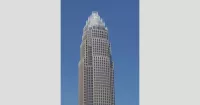
Bank of America is a multinational investment bank and financial...
California is a U S state on the Pacific Coast...

Tom Hanks is a highly acclaimed American actor and filmmaker...
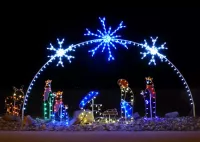
Christmas is an annual festival celebrated on December th commemorating...

San Francisco is a major commercial financial and cultural hub...

Disneyland located in Anaheim California is the first theme park...
Trending
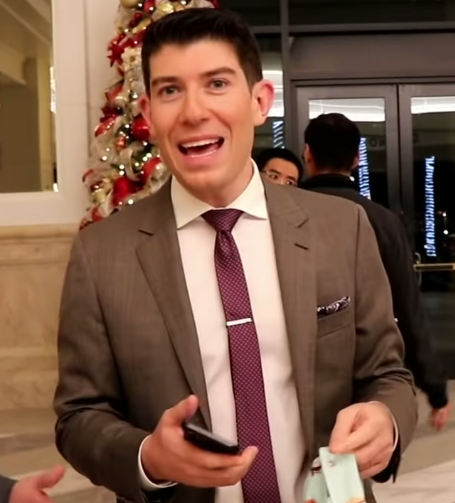
Jeff Passan is a prominent American baseball sportswriter and author He is known for his in-depth reporting analysis and commentary...

2 months ago Kyle Tucker Player Props and Chicago Cubs' Distrust in Wild Card Series
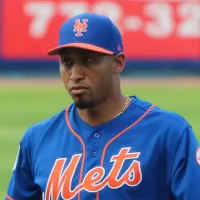
4 days ago Edwin Diaz Free Agency: Mets, Dodgers in Potential Bidding War After Williams Signing?
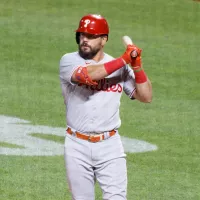
20 days ago Kyle Schwarber sparks free agency buzz: Phillies, Pirates show interest in slugger.
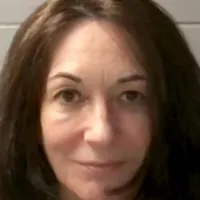
27 days ago Ghislaine Maxwell Seeks Trump Commutation; Prison Perks Investigated; Giuffre Family Reacts
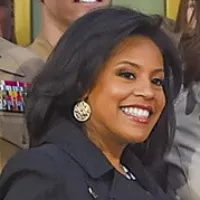
7 months ago Sheinelle Jones' Husband, Uche Ojeh, Passes Away at 45 After Cancer Battle
Popular
Matt and Ross Duffer known as the Duffer Brothers are...

Candace Owens is an American conservative political commentator and author...

Ilhan Omar is an American politician currently serving as the...

XXXTentacion born Jahseh Dwayne Ricardo Onfroy was a controversial yet...
Aftyn Alyssa Behn is an American politician currently serving as...

Tom Cotton is an American politician and Army veteran currently...

